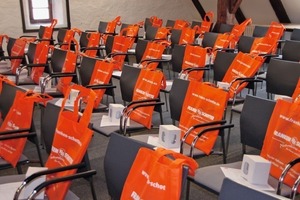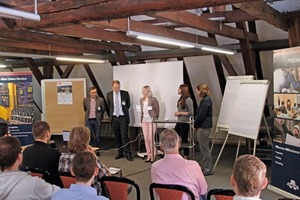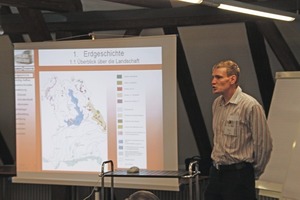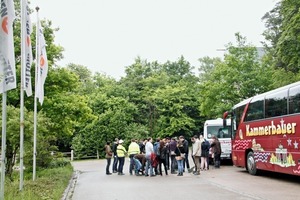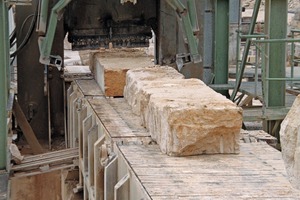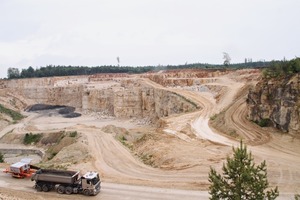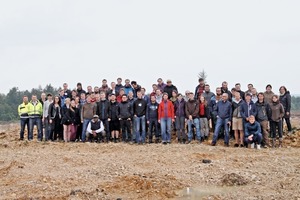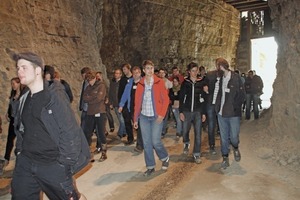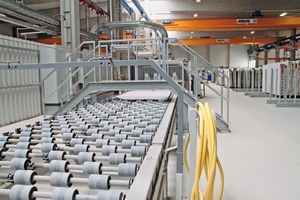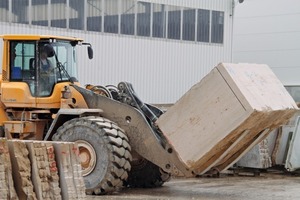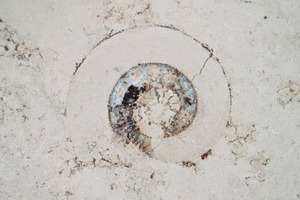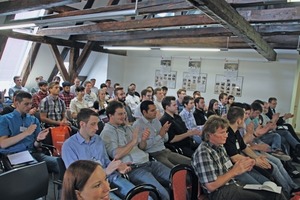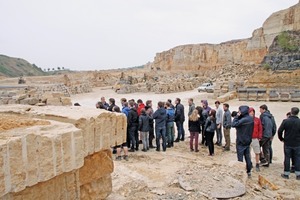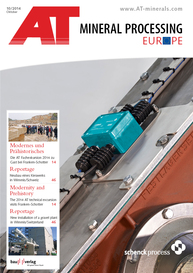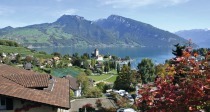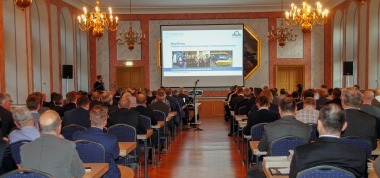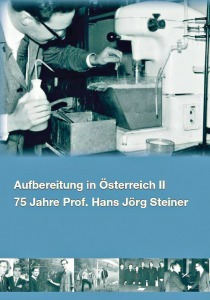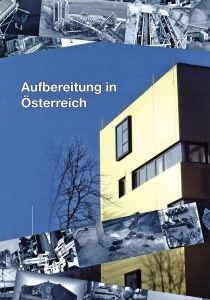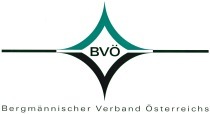Modernity and Prehistory
About 150 years ago still the seabed of the Jurassic Sea, the Altmühl Valley offers rich limestone deposits today – and one or other fossil find for collectors. In the calcareous sea water, lime slurry with the remains of dead marine creatures and clay material from the surrounding mainland were alternately deposited. The formation of White Jura (Malm) developed. Due to the pressure of subsequently deposited sediments of the cretaceous sea, the Jurassic deposits solidified and formed dense, mainly bedded limestone layers, which are relatively thin in the South of the Franconian Jura (Altmühl region) and which are even called “slate” in the area of Solnhofen.
This deposit was the destination of our AT MINERAL PROCESSING excursion this year. In addition to the lectures of the participating companies, plant tours provided comprehensive insight into the respective industry of processing engineering. Obviously, the focus of this year’s excursion was on the processing of limestone – host of the field trip 2014 was the Franken-Schotter GmbH & Co. KG.
Approx. 60 students and professors or supervisors of the Bochum University of Applied Sciences, RWTH Aachen University, TU Bergakademie Freiberg and TU Clausthal took part in the two-day event. On the one hand, the excursion provided the students with the opportunity to get practical information about one of their future fields of activity; on the other hand it pursued the goal of bringing together plant manufacturers and operators with the skilled personnel of the future. So students establish first contacts to arrange for internships or master theses – and the performing engineers and personnel officers of the companies AUMUND Fördertechnik GmbH, Hazemag & EPR GmbH, Haver Niagara GmbH and ThyssenKrupp Industrial Solutions get to know potential future specialists.
The lecture program began with the presentation by Sven Kersten, Franken-Schotter GmbH & Co.KG, who illustrated in detail both the plants we should visit later on and the geological conditions of the limestone deposit. Franken-Schotter was created in 1970 as the result of the merger of 5 individual enterprises who operated miner gravel mills. In the following year, the Dietfurt facility was built in the open countryside. The company grew constantly, with, among others, the asphalt mixing plant being included in the portfolio. In 1989, the plant in Petersbuch was extended to become one of the most modern manufacturing facilities. Here, the marble blocks are processed into tiles, base plates, window sills or wall coverings. The range of products comprises natural stone for garden and landscaping works, installation systems, stone basket systems, façade and wall coverings, natural stones for indoor areas as well as various aggregates and gravel.
Subsequently, Anna Kaja and Klaus Grüne informed about the AUMUND Group. Following a short introduction, Klaus Grüne presented, in an extremely illustrative manner, one day in the life of an AUMUND engineer. Here, the focus was on the PREMAS® concept, i.e. the preventative maintenance of plants. Then, Anna Kaja described the entry possibilities for students and graduates.
The afternoon of the excursion day was reserved for the first practical section. Destination was the Dietfurt facility of Franken-Schotter GmbH with the quarry of approx. 200 ha, which was explored by walking. In the Dietfurt quarry, about 60 000 m³ of raw blocks are exploited every year. We could take one or other small limestone in our hands – with a little bit of luck the remains of a fossil were found. During the plant tour the students were led to all stages of exploitation and processing, starting with extraction, crushers and sieving plants up to the sawing hall and gabion manufacturing. In order to avoid wasting precious material, dolomite is no longer extracted by blasting, but the stone blocks are sawn using diamond wire. With this method, exact cuboids with completely even cutting surfaces are achieved, which are ready for immediate processing. All participants were very impressed by the crusher– for there is certainly a difference between seeing all types of crushers in the textbook and witnessing the power (and the loudness) in close proximity.
The evening saw a plant tour of different nature – a brewery was attached to our hotel. And after having learnt everything about beer brewing, it wasn’t so bad after all to savor it. Against this background, it was almost natural that extensive use was made of the possibility to talk with personnel officers and engineers of the companies.
Nevertheless, the next morning the presentation “Application of flexible processing concepts” by Norbert Hormann, Hazemag & EPR GmbH, started on time. Apart from presenting the company, the main issues were the primary crushing by means of impact crushers, using Franken-Schotter as a practical example, as well as the subsequent sieving through a roller screen. In this context, the factors influencing the resulting product were illustrated. Especially for future engineers, working in far-off countries is an interesting topic – Norbert Hormann finally presented projects in the Iran and in Italy.
Based on a number of projects, Andreas Kimmeyer and Dietrich Reinge, HAVER Niagara GmbH, showed where in the field of material processing crushing, classifying screening, washing and pelletizing is carried out. The potential applicants were shown what career management can look like and how to structure a competence analysis, illustrating the start into the professional life against the background of the presenters’ own careers.
The final lecture of this year’s students’ excursion with the forward-looking title “Engineering Excellence3” was held by Christoph Schulze and Christina Böckers, ThyssenKrupp Industrial Solutions. As a former graduate of the TU Bergakademie Freiberg, Christoph Schulz was able to put himself in the students’ situation. At first, the students were acquainted with different, rather huge processing plants all over the world. Subsequently, details were discussed: How do you get a contract? What are the next steps? How do I realize the building for the largest fully-mobile crushing plant of the world, the MC9000 Datang? According to the Motto “What can you do for us?” Christina Böckers went into the possibilities for starting the professional career with ThyssenKrupp Industrial Solutions. She gave valuable advice on the presentation of the application documents and on job interviews.
The practical conclusion of the excursion took place in the Petersbuch works. There, unfortunately with continuous drizzle, the participants were given the opportunity to visit a state-of-the-art production plant for products like high-quality limestone slabs. Raw blocks up to 25 tons are processed into façade plates, floor and wall covering, masonry and other products.Work steps, such as cutting to size, grinding, polishing and sand blasting are carried out fully automatically according to previously programmed parameters. It was also particularly interesting to see that apart from the ultra-modern plant, many fine subtleties or special designs according to customer specifications are still manual work.
The team of AT MINERAL PROCESSING thanks the company Franken-Schotter for the possibility to visit the facilities in Dietfurt and Petersbuch within the context of the AT excursion and, above all, for the interesting guided tours!
Autorin/Author: Dr. Petra Strunk, Chefredakteurin der AT MINERAL PROCESSING

